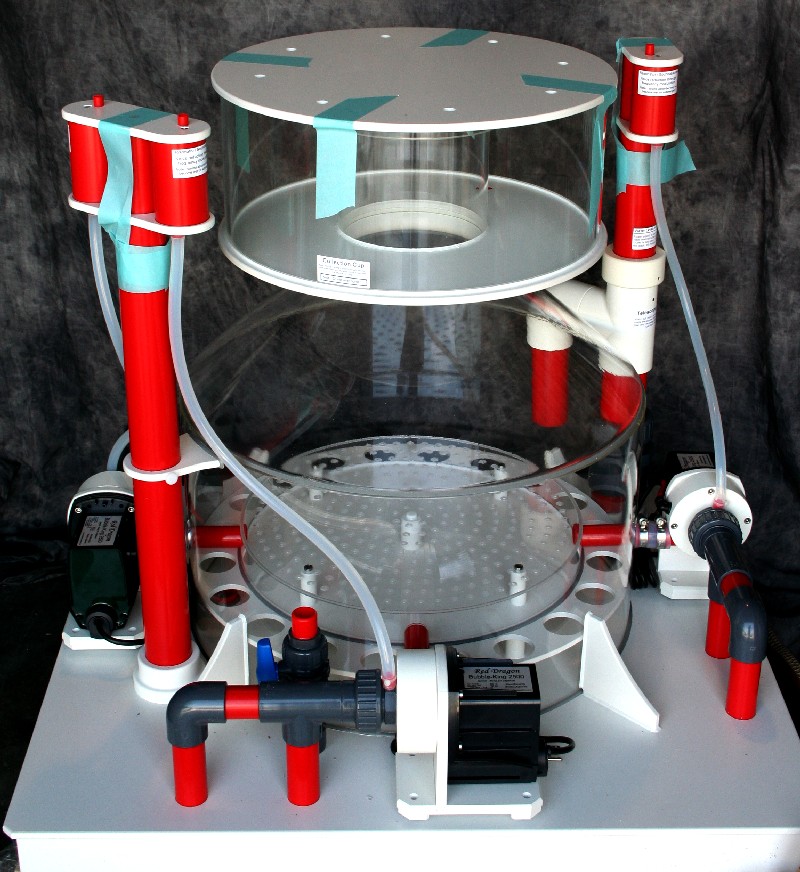Coral Spotting in Cuba
Gardens of the Queen, a protected archipelago off the southern coast of Cuba, is renowned for their healthy population of sharks and mature fish. But coral diversity in the park can be just as spectacular, especially if you know where to look.
Coral spotting is diving with the intention to observe coral diversity and we’re here to give you our top 10 list of must-see corals in Cuba. These corals are not particularly rare however if you weren’t paying attention many of them would be easy to miss.
Each coral below has a short description and includes a link to our Guide to Caribbean Corals for a more in-depth explanation of the species. Without further adieu, here are our Top 10 Corals to Spot in Cuba.
1. Dendrogyra cylindrus – Pillar Coral
Dendrogyra grows into pillars, spires or columns that can reach more than 2m or 6 feet tall, and is commonly known as the Caribbean Pillar Coral. During the day, polyps are commonly extended giving Dendrogyra a fuzzy appearance. If the polyps were retracted the skeleton has meandering walls and valleys like a brain coral.
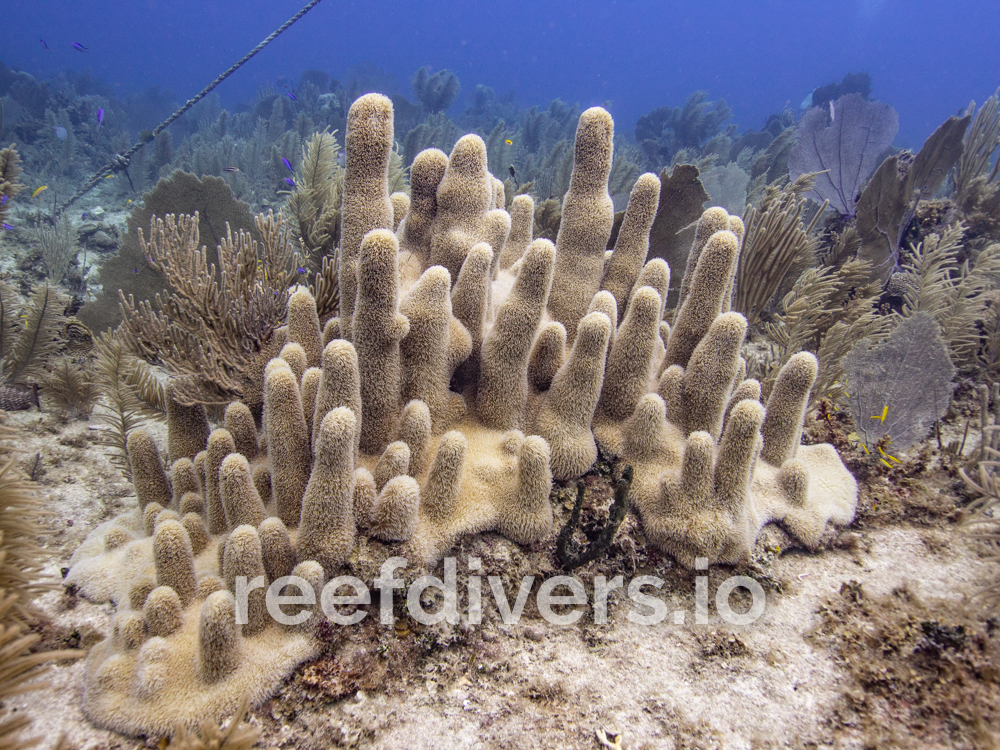
2. Acropora palmata – Elkhorn Coral
Acropora palmata is the king of all corals and one of the most important reef-building species in the Caribbean! Elkhorn Corals make complex habitat for juvenile fish and extensive colonies growing close to shore can help buffer the coastline from storms and waves.
If you’re planning a trip to the Gardens of the Queen, make sure to request a snorkeling trip to the Elkhorn coral habitat. No scuba diving is allowed on this reef to further protect the corals. 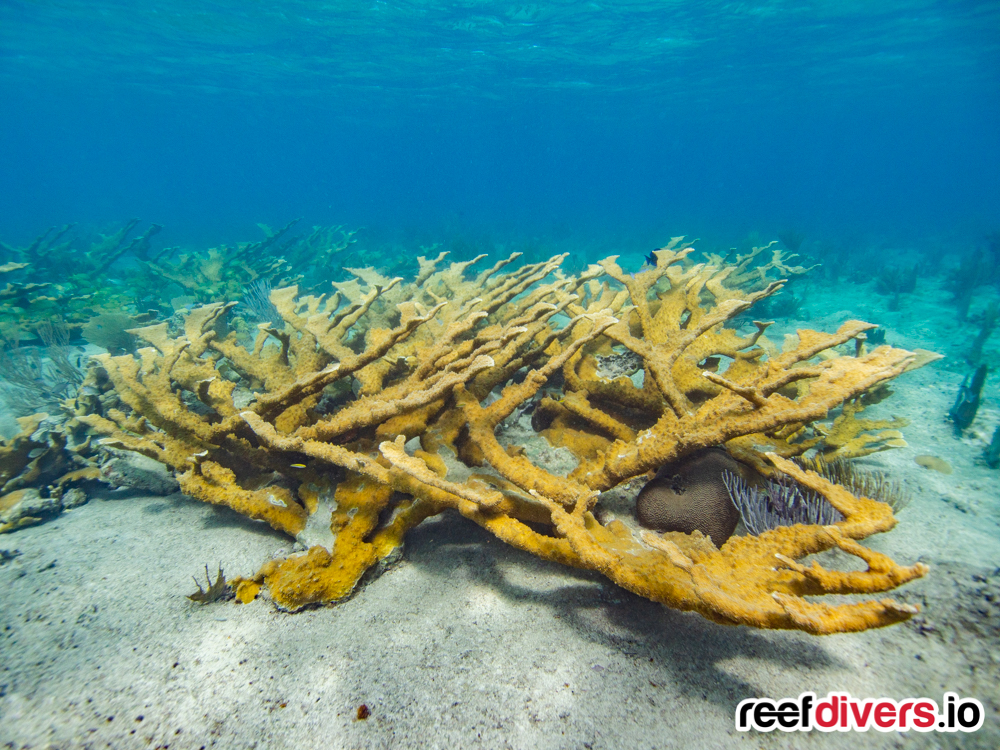
3. Acropora cervicornis – Staghorn Coral
No Caribbean reef dive is complete without some Acropora cervicornis, howeve,r you will be surprised at how difficult this coral is to find. Sadly the branching Caribbean Staghorn Coral is disappearing.
Many coral restoration projects focus on restoring this species because it provides a complex habitat for fish, and is relatively fast growing.
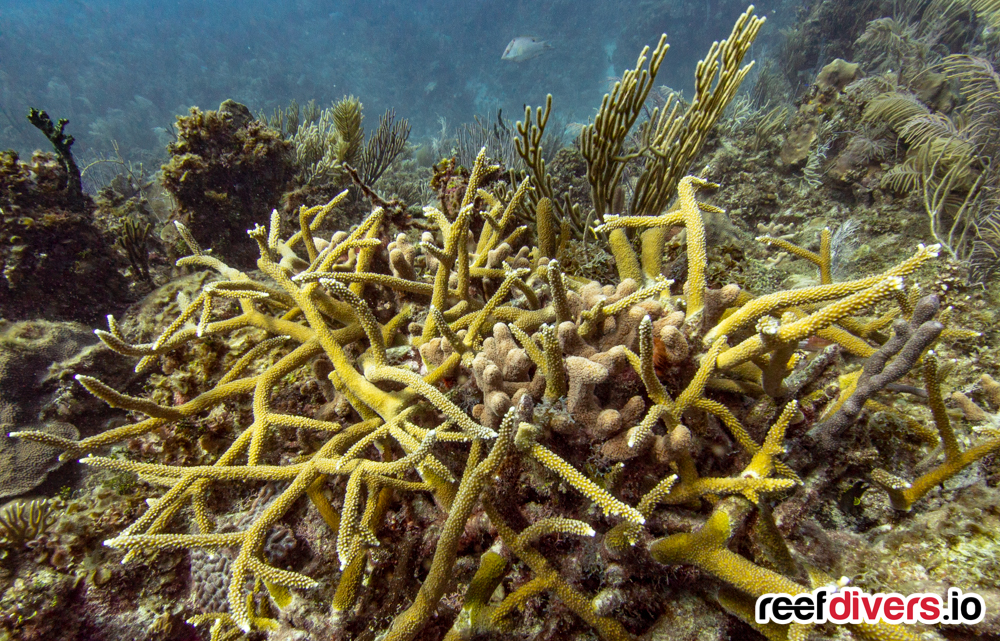
4. Psuedodiploria clivosa – Knobby Brain Coral
Go beyond spotting your typical brain coral and keep your eyes on the lookout for the Psuedodiploria clivosa the Knobby Brain Coral. This coral can help deepen your understanding of coral growth forms by recognizing the bumps growing in the coral’s skeleton.
Not only will this coral help you to recognize different growth forms, but this coral is quite a habitat specific, and I’ve always found it in shallow coastal flats between 2m and 4m deep. We found this colony while snorkeling the magnificent Elkhorn reef.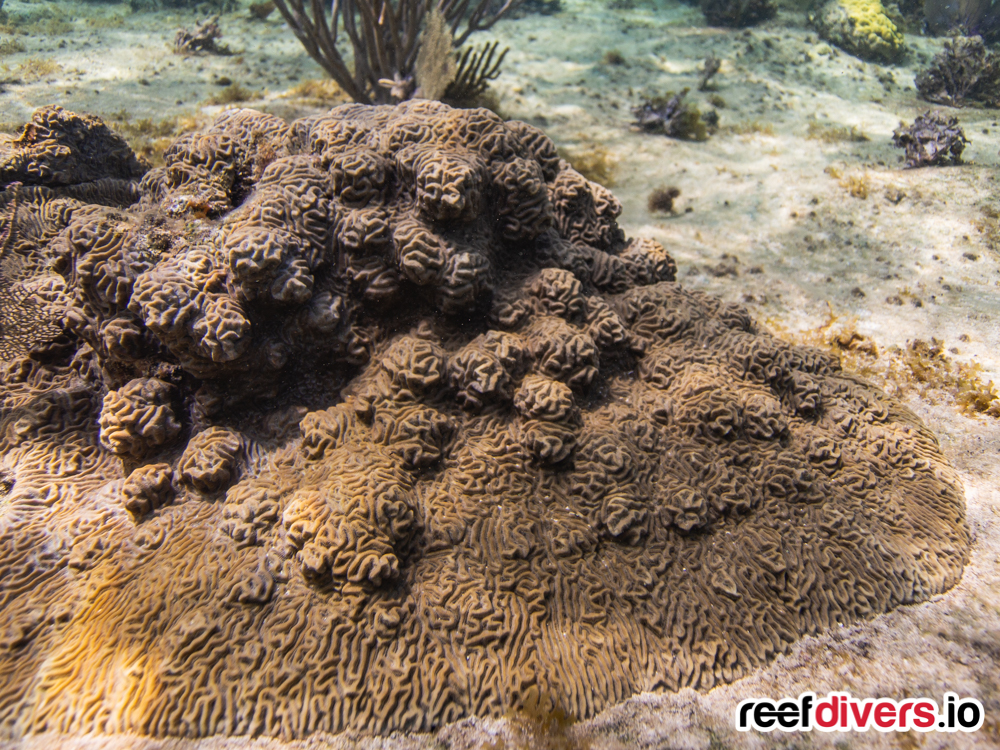
5. Mussa angulosa – Spiny Flower Coral
It would truly be a shame to leave Cuba without spotting a Mussa angulosa, Spiny Flower Coral. We saw these corals around 6-12m deep with different color colonies at each site. This coral has a low abundance so you will have to search to find this species.
Mussa corals have large fleshy polyps that can be over 15cm or 6inches wide. These slow growing corals are vulnerable to sedimentation and pollution, and over the past two decades have disappeared in areas of Mesoamerica where they were once abundant. Gardens of the Queen is a critically important seed bank of diversity for corals like Mussa angulosa.
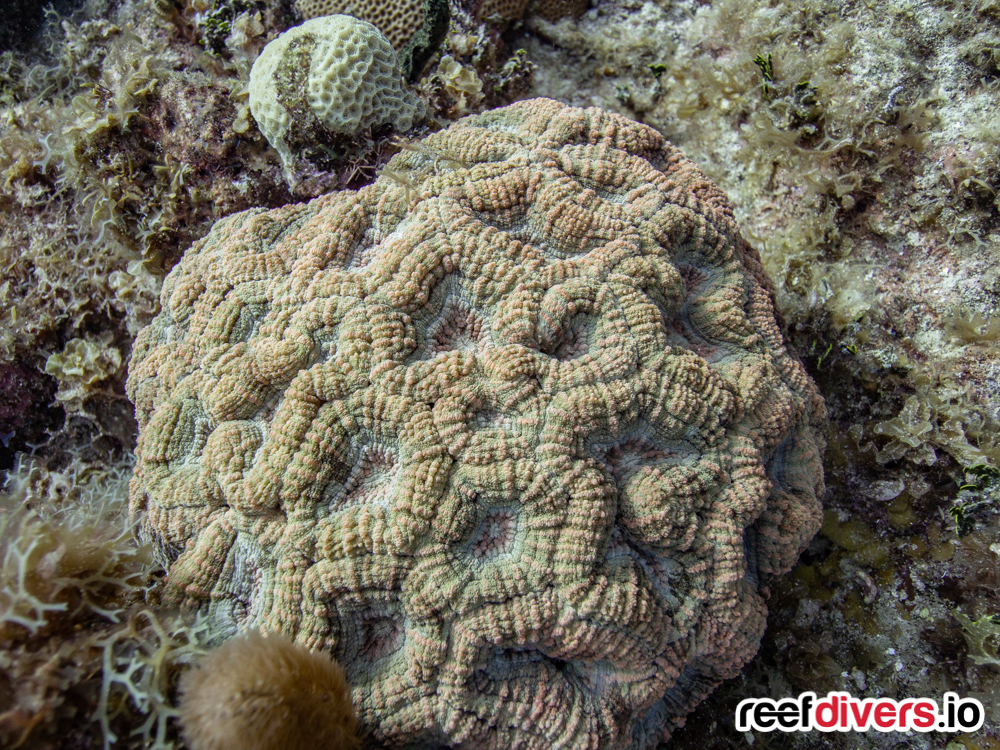
6. Scolymia cubensis – Artichoke Coral
You’ve heard me say it, but you’ll here it again! I LOVE Scolymia!! This is my favorite Caribbean gem and I don’t think I really need to explain why. These large solitary polyps can be every color imaginable and searching among coral ledges, caves and walls becomes the ultimate underwater treasure hunt.
This Holy Grail Rainbow Scolymia was a highlight from my trip to Cuba and definetly the nicest coral is saw on the entire trip.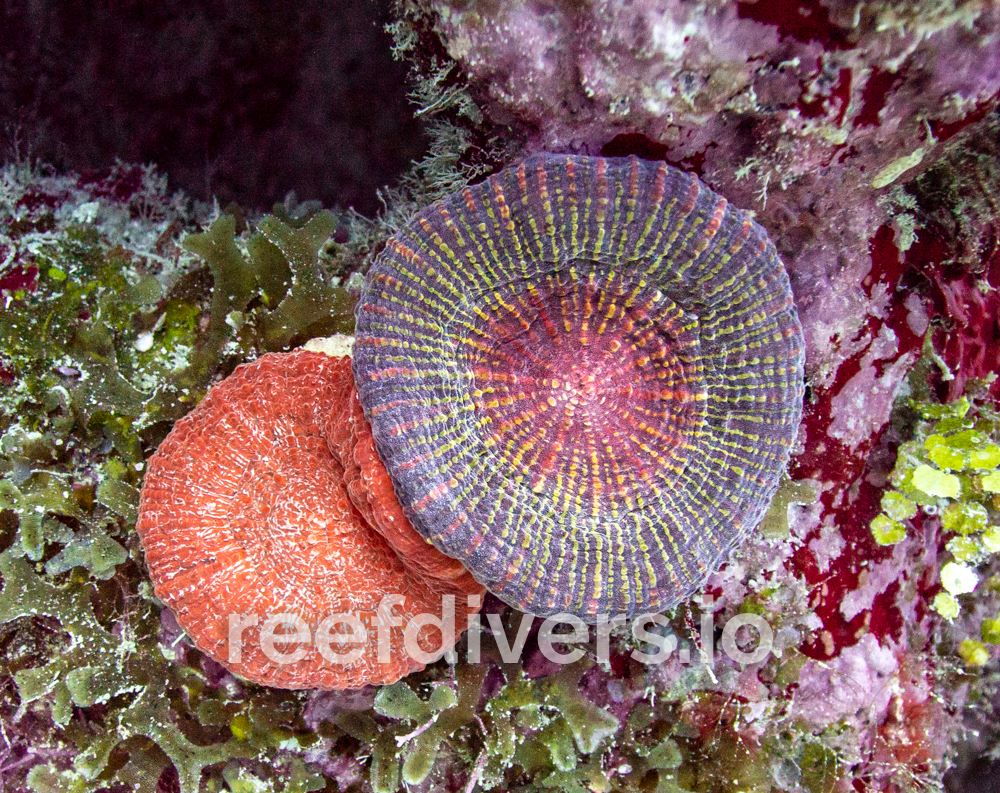
7. Isophyllastrea rigida – Rough Star Coral
This is a coral spotting challenge! We only found four examples of Isophyllastrea rigida, Rough Star Coral in Cuba. For me, this is the perfect example of what makes coral spotting a never-ending treasure hunt.
I never set out specifically to find this coral, but knowing it’s out there always has me wondering when and where I will spot the next colony. The roughly shaped corallites are only a few cm wide. This colony below would have been around 15-20cm wide. We had the most luck finding the Rough Star Coral in shallow reef flats, the same habitat you would find the knobby brain and elkhorn corals.
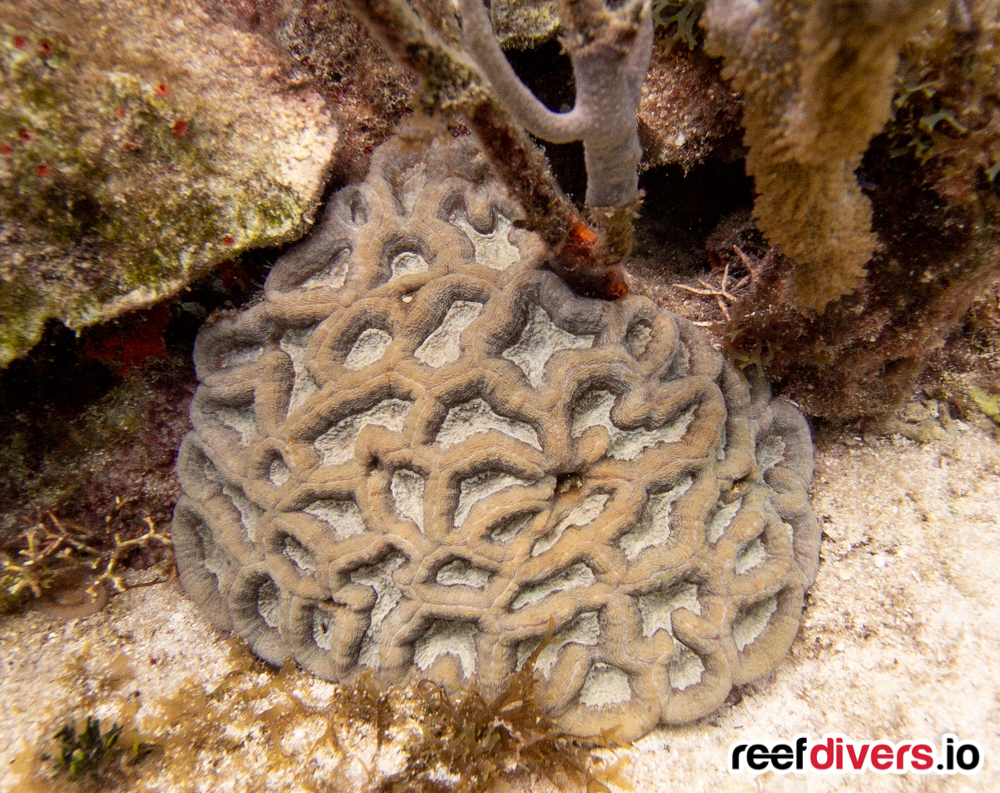
8. Manicina areolata – Rose Coral
We only found a few of these meandering rose corals and most of the time they were resting directly on the sand below 12m. Manicina, Rose Coral is never a big coral, instead of forming blooming spherical colonies less than 30cm wide. Together with the rough star coral, these are the two rarest corals to spot on my list.
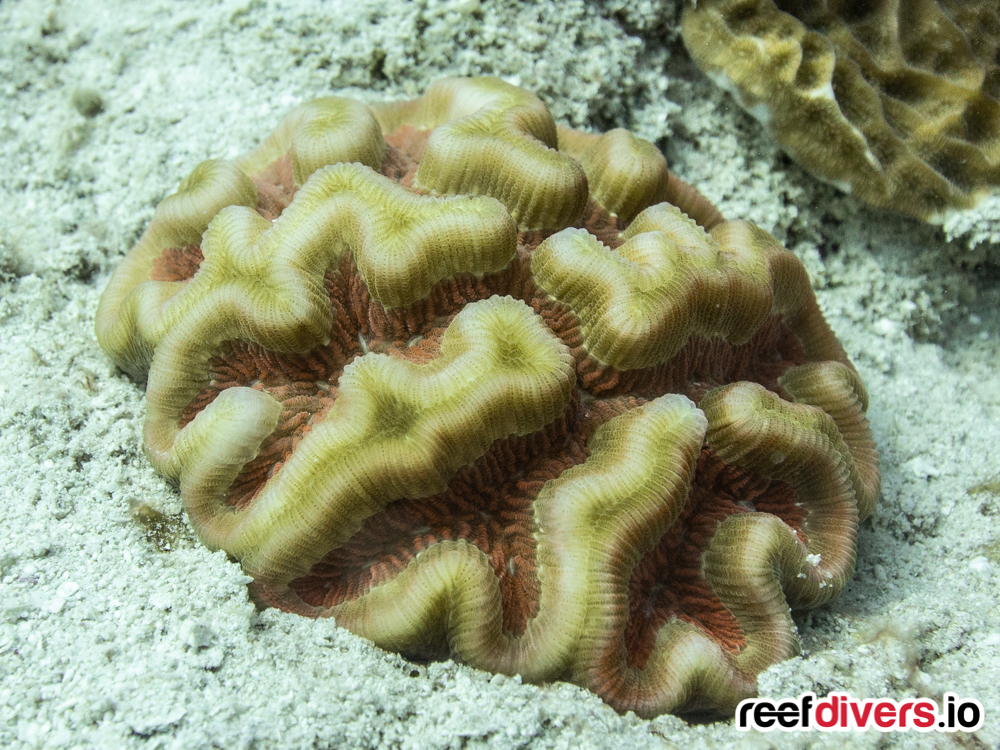
9. Mycetophyllia – Cactus Coral
Mycetophyllia is a diverse genus of Caribbean corals with five species. I am not limiting my list to a single one, however, just to bring attention to this abundant colorful coral. Cactus Corals are found living in all reef habitats from the shallow bight reef down to low light walls.
This coral has a thick layer of tissue covering the skeleton and can have intricate color patterns. If you want to practice some macro photography skills, Mycetophyllia is an elegant subject.
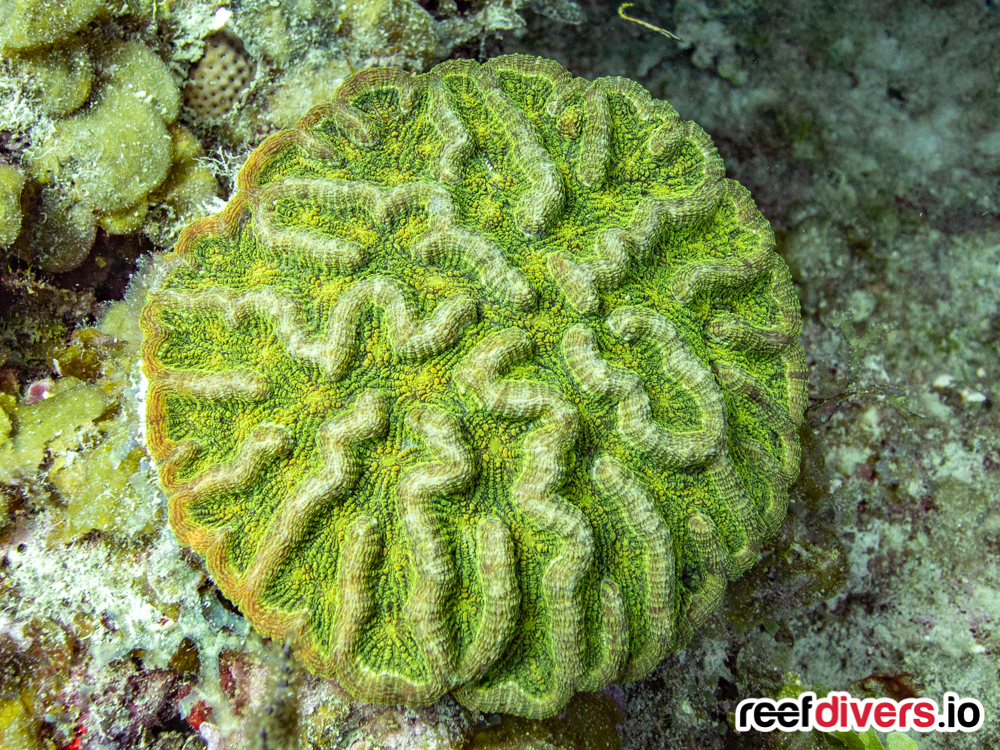
10. Dichocoenia stokesi – Elliptical Star Coral
This isn’t your everyday Elliptical Star Coral. To appreciate this colony you need to take a closer look at the long meandering corallites.
For every hundred common Dichocoenia star corals you find, you will come across only a handful with these elongated corallites. New species, or just a different growth form? Either way, this is one cool coral.
If you can spot this unique growth form of Dichocenia, well I think you’ve graduated to a become a master Caribbean coral spotter! Have any questions about these corals or more corals to spot in Cuba? Leave us a comment below.
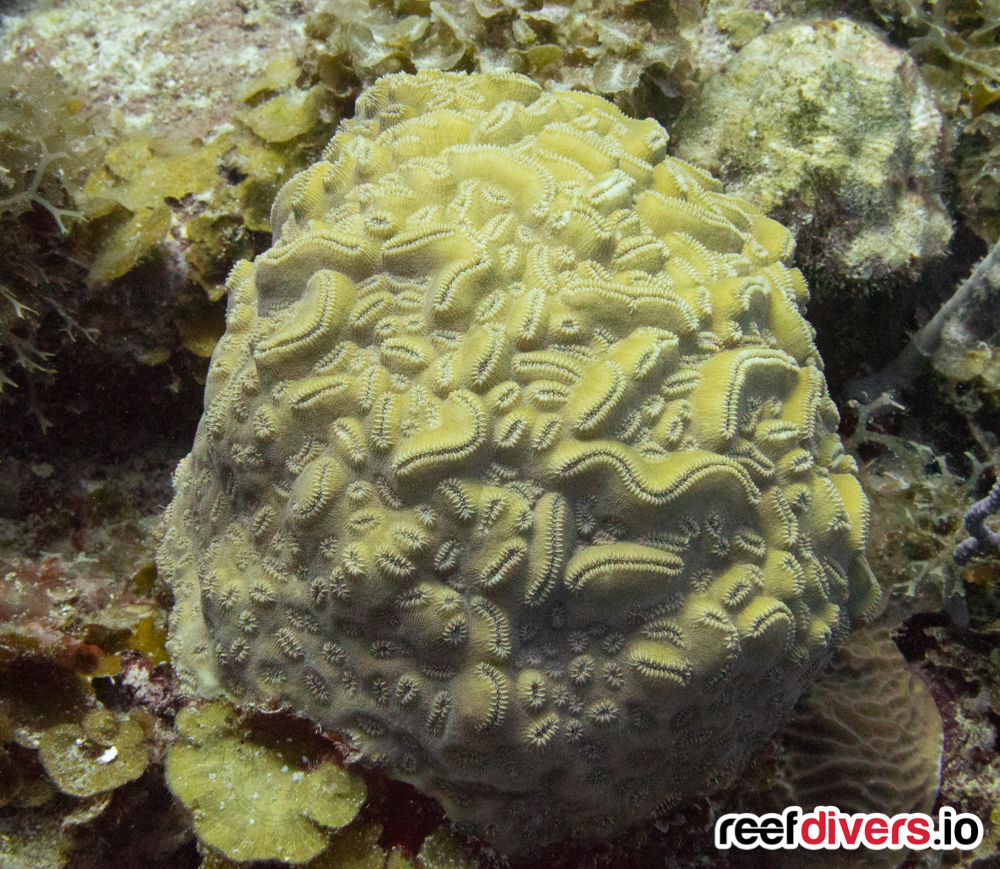
We went diving in Cuba with Avalon Liveaboard


